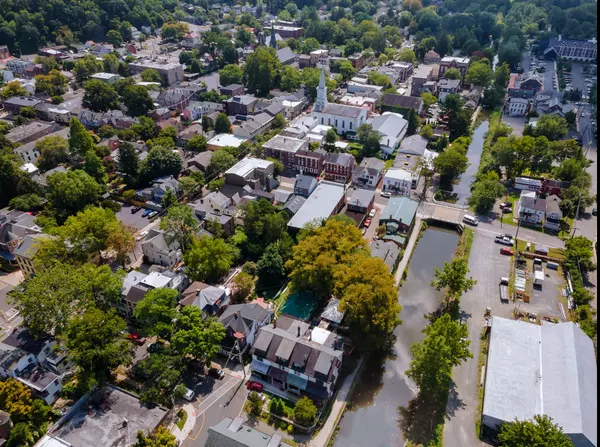Warren County Housing Market Recap – September 2025

The Quiet Transition: Small County, Big Signals
Warren County doesn’t usually grab headlines — but it often sends early warnings about where the broader New Jersey market is headed. As the fall data rolls in, the numbers reveal a subtle but important shift: slowing demand, building inventory, and the first real signs of softening in the lower price tiers.
Macro Context: A Cooling Economy Meets Lower Rates
The Otteau Group’s September analysis points to continued moderation in inflation, with oil prices trending down and core housing costs flattening. Mortgage rates — now averaging 6.3%, down from 7.79% in late 2023 — are providing modest relief, though not yet enough to reignite demand across all price segments.
Meanwhile, statewide employment remains flat, with job creation down 4,000 YTD and unemployment holding at 5.0%, up from 3% two years ago. For Warren’s largely commuter-based economy, that means fewer relocations and slower turnover in the mid-tier market.
Key Metrics: Demand Stable, Supply Expanding
New Jersey as a whole recorded +4.4% YOY sales growth in September, but statewide inventory is up +46% since January, crossing 17,500 active listings. The story in Warren parallels that trajectory, with local supply rising and absorption slowing
Warren County’s unsold inventory climbed +10% YOY, while buyer activity edged down slightly. Months of supply now average 2.5, up from 2.1 a year earlier — not alarming, but directionally consistent with a cooling cycle.
Municipalities that were once undersupplied are now holding listings longer, signaling a normalization from the post-pandemic frenzy.
Municipal Analysis: Early Fractures in the Surface
- Phillipsburg continues to reflect the lower-income urban pattern — higher months of supply (3.2–4.0) and thinner buyer pools. It’s among the most likely submarkets to see early-stage distress activity.
- Washington Township remains one of the county’s healthiest, with demand keeping months of supply near 1.8–2.0, indicating resilient absorption.
- Hackettstown shows mid-level balance but rising volatility, bouncing between 2.0–3.5 months of supply midyear, likely tied to seasonal commuter shifts.
- Independence and Lopatcong Townships are seeing more pronounced inventory growth — over 20% YOY in unsold listings — with buyer-to-seller ratios slipping toward 55/100 in late summer.
My thoughts:
Warren County has always been North Jersey’s early tell it softens first and recovers quietly before anyone’s watching. The data points to a market in transition rather than trouble: Phillipsburg and Lopatcong are showing the first liquidity strain typical of outer-ring towns when affordability tightens and commuter traffic thins. That’s where pre-distress signals turn into asset visibility for institutional buyers.For investors, this is the “lead indicator” market small enough to read sentiment shifts before they show up in Morris or Hunterdon, but large enough to move inventory meaningfully when sellers capitulate. The pattern is familiar: price slippage starts in the lower tiers, then levels off as rental yields draw investor absorption.
In short, Warren County gives smart capital the advantage of timing it’s where the next REO uptick will be measured in weeks, not years. Those who build local presence now will be first in line when lender-owned inventory begins to surface in 2026.
Price Trends: Plateau Forming
Statewide, home prices remain +7.5% YOY, but quarter-over-quarter growth fell to +1.2%, signaling that the appreciation wave has crested. In Warren, this plateau is even clearer — median prices have flattened since spring, and listing-to-sale ratios are compressing.
The $400K–$600K tier shows the sharpest slowdown, with listings up +19% YOY and more price adjustments appearing in MLS data. The sub-$400K segment, dominant in Warren, saw an 11% statewide sales drop, an indicator that affordability limits are suppressing demand.
That bottom tier also tends to lead any shift toward short sales or REO — particularly when sellers are equity-thin and facing mortgage resets from 2021–2022 purchases.
Distress Signals: Thin Margins, Tighter Liquidity
Warren’s smaller municipalities amplify every economic tremor. A few townships already exhibit widening spreads between contract sales and inventory. When demand ratios dip below 50/100, it typically precedes a measurable uptick in delinquencies within six months.
Markets like Phillipsburg, Franklin, and Belvidere are at that threshold now, each recording multiple months where unsold listings outnumbered buyers by 3:1. That imbalance, coupled with longer marketing times, hints at brewing distress across older housing stock and investor-owned units.
My thoughts:
This is where the next opportunity wave starts quietly, in markets that move before the headlines do. Phillipsburg, Franklin, and Belvidere are now flashing the same signals we saw in Sussex a quarter earlier: thin equity, slowing absorption, and widening buyer-to-seller gaps.For institutional buyers and note funds, these are prime off-market positioning zones. The data says we’re entering the pre-distress window, the stage where sellers haven’t capitulated, but liquidity already has. That’s when direct acquisition, note purchases, or quiet short-sale negotiations generate the best basis control before the REO flow becomes visible.
In Warren County, scale isn’t the play precision is. The smartest capital here moves early, locally, and under radar while everyone else waits for confirmation that’s already written in the data.
Investment Thesis: Patience Pays in Secondary Markets
Warren County’s scale may be modest, but its directional signals are meaningful. For asset managers and funds, this is the stage to:
- Track pre-distress listings — properties lingering beyond 90 days, especially in sub-$400K tranches.
- Build rental conversion pipelines — yields remain higher here than in Morris or Bergen, offsetting short-term value erosion.
- Accumulate during thin liquidity — when retail buyers hesitate, capital with staying power captures discounted entry.
The 2026 horizon aligns with improving rates, stabilizing employment, and a likely rebound in suburban migration — all factors that can turn today’s uncertainty into tomorrow’s return.
Bottom Line: Subtle but Strategic
Warren County’s housing market isn’t dramatic — it’s deliberate. Rising inventory, slower absorption, and pressure on the affordable tier make it a classic early-cycle setup. The fundamentals point toward re-pricing, not decline, and favor investors willing to act while retail sentiment remains cautious.
This is how rebalancing begins: quietly, county by county, before the next wave of institutional capital arrives.
Categories
Recent Posts








GET MORE INFORMATION

